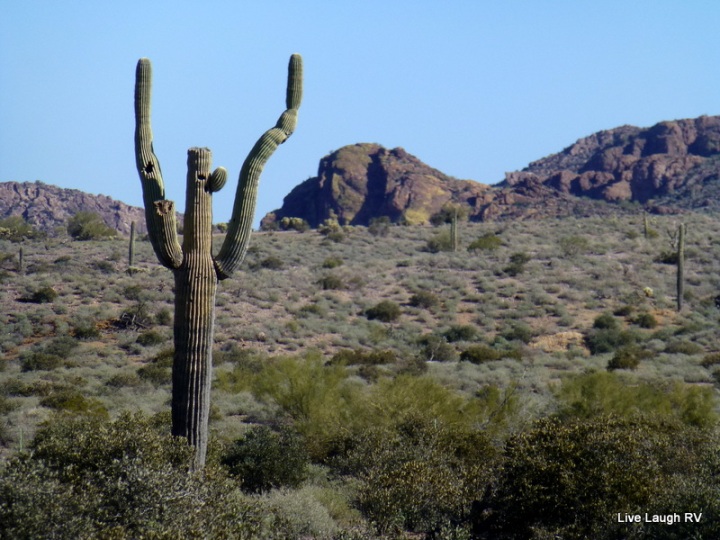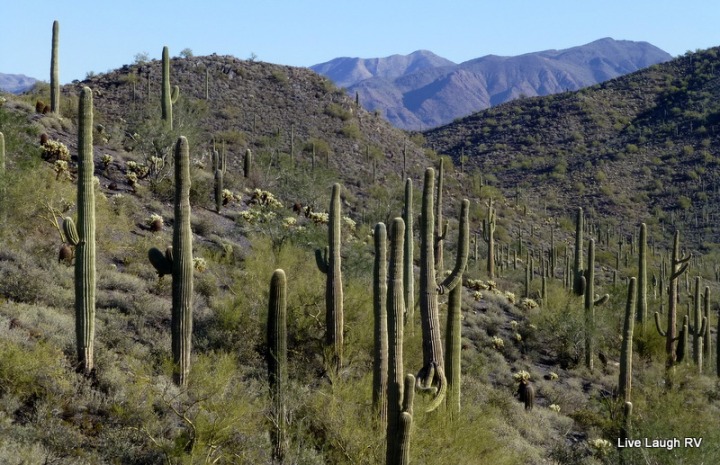A week ago we left Tucson and took a five-hour drive to Elephant Butte State Park in New Mexico. We stayed two nights then headed to Santa Fe, New Mexico for another two night stay. We are now resting in Southern Colorado. Although its sunny, its cold, and I long to be back among my beloved saguaro cacti.
Mind you, our four-month trip meandering around Arizona was abundant with inclement and unusual weather. The rare snowstorm in Tucson was stunning. This Colorado gal is used to snow, but seeing the saguaro and the desert topped with snow was a special sight to behold.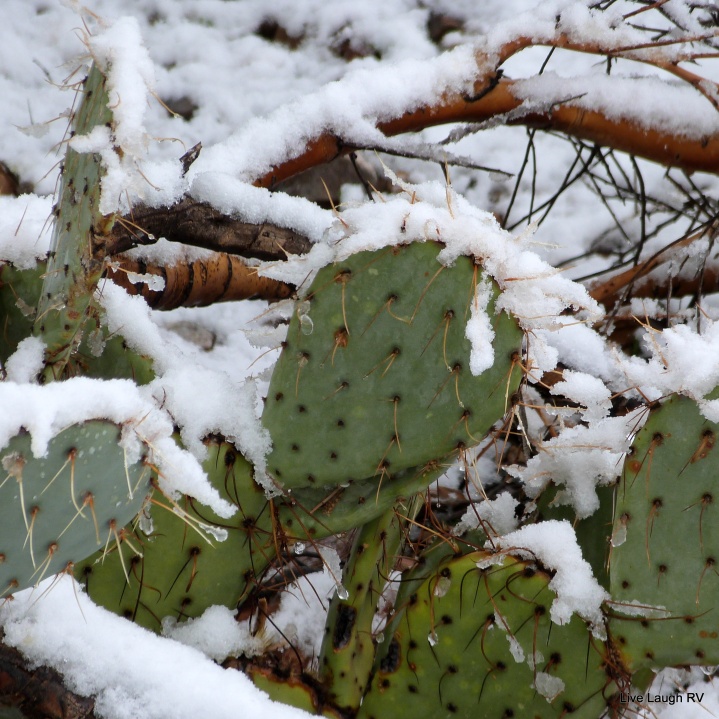

I would have enjoyed it even more if I had brought the proper attire along. Who would have thought I could have used my snow pants in Tucson, Arizona?


I’ve talked before how the desert appears to come alive after a rainfall. This was very true the day after the snowstorm. During a heavy rain, or in this case….snow, a saguaro cactus will absorb as much water as its root system allows. To accommodate a potentially large influx of water, the pleats of a saguaro expand like an accordion. I was fascinated with the plump texture of the saguaro after the snowfall. You can literally see the water trapped below the skin’s surface.

Because the majority of a saguaro is made up of water, an adult plant may weigh as much as six tons or more. This tremendous weight is supported by a circular skeleton of inter-connected, woody ribs. The number of ribs inside the plant correspond to the number of pleats on the outside of the plant.

Saguaro cacti are host to a great variety of animals. The gilded flicker and Gila woodpecker excavate nest cavities inside the saguaro’s pulpy flesh.
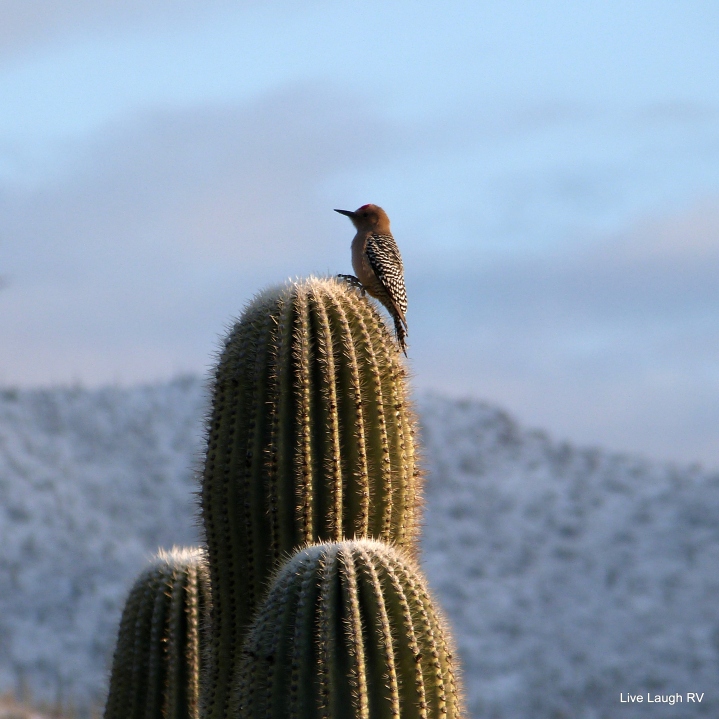


Large birds like hawks also use the saguaro for nesting and hunting platforms. Their stick nests are constructed among the arms of a large saguaro. In mid summer, the saguaro cacti provides a source of food for animals with its ripening fruit. Jackrabbits, Javelinas, Mule Deer and other animals will eat the saguaro’s flesh during dry summer months, providing these animals with a water source.
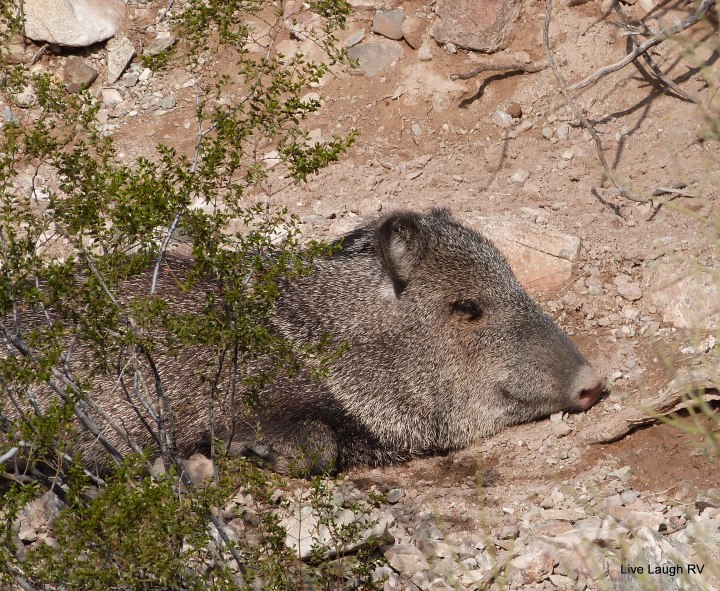
No trip to Tucson would be complete without a visit to the Arizona-Sonora Desert Museum. This 21 acre parcel of Sonoran Desert is a fusion of; zoo, garden, museum, and aquarium. Visitors will walk away with a deeper understanding and appreciation of the remarkable ecosystem of the Sonoran Desert region.

The “Raptor Free Flight” was highly recommended by LuAnn of Paint Your Landscape and it did not disappoint. Birds soar completely untethered and fly close overhead…. what a unique experience


The Hummingbird Aviary alone was worth admission. A volunteer, otherwise known as a Docent, was passionate about these little beauties. She pointed out the tiny nests and shared details on their habitat. Al had one flutter within inches of his face. It was tough pulling ourselves away.

We spent almost three hours strolling the Desert Museum and would definitely return. Our time in Tucson was way too short and Al and I promise each other a longer stay next winter.




